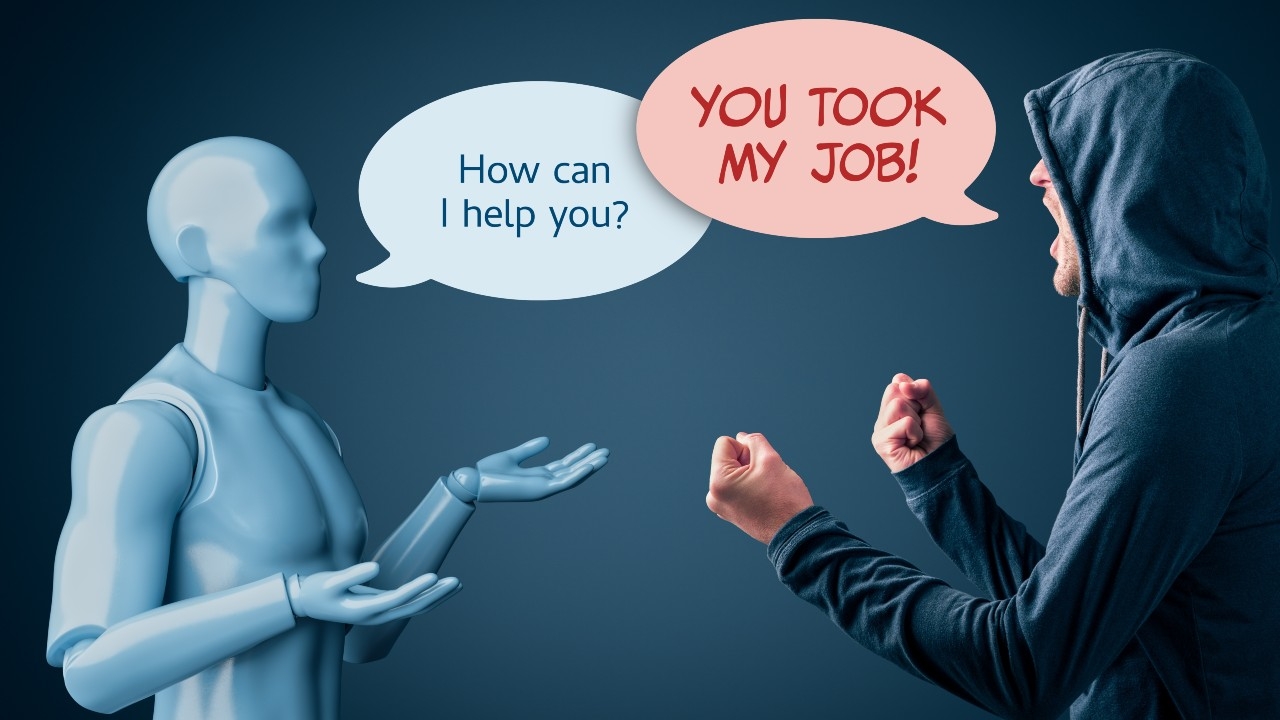Let's Master AI Together!
Big Tech Layoffs Coming Thanks to AI
Written by: Chris Porter / AIwithChris

Image Source: CCN
The Impact of AI on Employment in the Tech Sector
The tech industry is at the forefront of innovation, but the rapid pace of advancements in artificial intelligence (AI) is causing seismic shifts in employment patterns. In recent years, companies such as Google, Meta, and Microsoft have sought to prioritize AI, resulting in a wave of layoffs affecting approximately 150,000 employees across the sector. Beyond just numbers, these layoffs are indicative of a larger trend in which major tech firms are reevaluating their workforce strategies in light of AI capabilities.
In 2024, staggering reductions in tech jobs have been reported as major companies streamline their efforts to focus sharply on AI development. Google, for example, made the strategic decision to merge its Android and Pixel teams to enhance operational agility. This restructuring inevitably led to job reductions within these divisions, as resources are realigned towards endeavors deemed crucial for advancing AI.
Similarly, Meta announced plans that would see about 4,000 employees laid off, with a focused effort towards bolstering AI initiatives. These decisions show a clear trend: companies are favoring AI-enabled efficiency at the expense of certain job roles, particularly those that can be automated or redefined. While this strategic shift may be beneficial for the companies, the broader implications for the workforce cannot be overlooked.
Driving Forces Behind the Layoffs
A survey conducted by Adecco Group highlighted a crucial statistic: 41% of senior executives expect workforce reductions linked to AI advancements. This considerable percentage signals a widespread sentiment throughout the tech industry that generative AI is poised to revolutionize the way work is approached, particularly in roles that involve repetitive tasks. As these tasks become automated, the need for certain positions diminishes, driving an urgent need for companies to rethink hiring and layoffs.
The momentum behind AI initiatives is also pushing significant investment. Take SAP as a luminary example; despite announcing restructuring plans affecting 8,000 roles, it simultaneously disclosed a monumental investment of $2 billion in AI. This contradiction might appear troubling at first glance, but when contextualized, it becomes clear that organizations are building a more efficient future while grappling with the growing pains of workforce displacement.
AI is not merely about technological enhancement; it symbolizes a transformational wave, shifting how work gets done across various sectors. For employees, this underscores the importance of adaptability and continuous learning. With many jobs evolving in response to new technologies, upskilling and reskilling become paramount for workers aiming to stay relevant in a rapidly changing job landscape.
The Road Ahead: Adapting to an AI-Centric Workforce
The trajectory of layoffs in tech firms illustrates a structural change that is not merely temporary. As large organizations position themselves in a competitive landscape increasingly driven by AI innovations, the workforce must also adapt to this new paradigm. Moving forward, employees need to understand how AI developments directly influence their roles and what steps they can take to remain valuable contributors in their respective fields.
It's essential for workers to consider the skills that will likely be in high demand. Among them, proficiency in AI tools, data analytics, and machine learning stands out. The combination of technical skills alongside traditional abilities in critical thinking and creativity will become increasingly necessary for anyone looking to secure their place in an Agile workplace. Therefore, continuous education programs that teach these skills will gain prominence, enabling workers to pivot into new roles or evolve their current ones.
Collaboration between companies and educational institutions can be beneficial in providing tailored programs aimed at refining existing talent and accessing new talent pools. Initiatives that encourage partnerships for training can help fortify the workforce against obsolescence while ensuring that labor markets are responsive to the rapid advances in AI. By adjusting curricula to reflect the changing landscape, educational institutions can prepare graduates for a world where AI plays a central role in daily operations.
Conclusion: Embracing Change and Future Opportunities
Ultimately, while the surge of AI in big tech leads to significant job reductions, it simultaneously opens up new avenues for employment and innovation. Enthusiasm surrounding AI is palpable, yet it is tempered by the reality that not all employees will transition unharmed into this new epoch. However, adapting to these changes can result in not only surviving but thriving in a future where tech jobs evolve.
For more insights on the current landscape of AI, its implications for the job market, and guidance on navigating these transitions, explore more at AIwithChris.com. The shifting paradigm spurred by AI creates opportunities for those willing to adapt and embrace the technologies of tomorrow.
_edited.png)
🔥 Ready to dive into AI and automation? Start learning today at AIwithChris.com! 🚀Join my community for FREE and get access to exclusive AI tools and learning modules – let's unlock the power of AI together!
